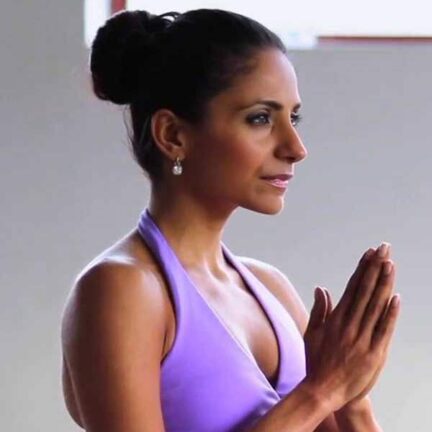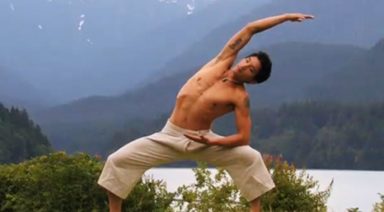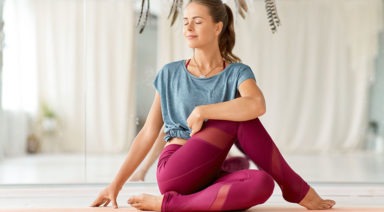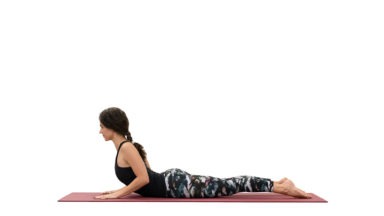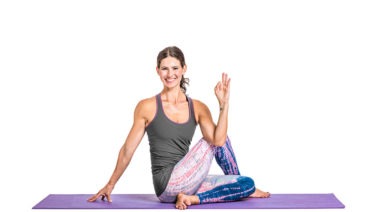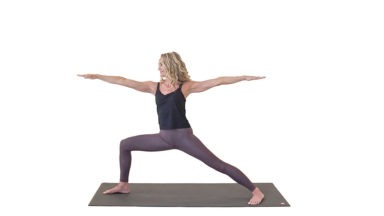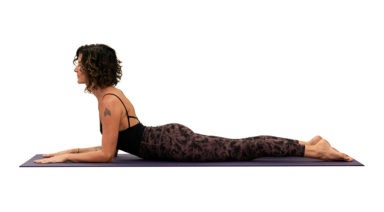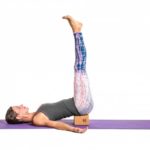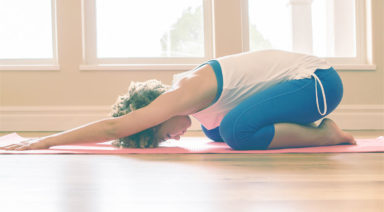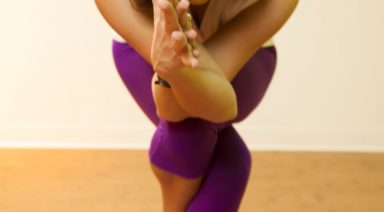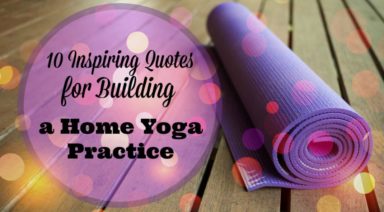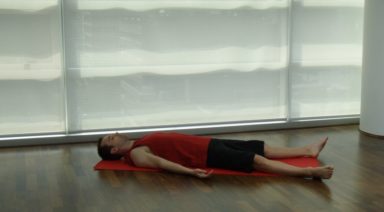4 Yoga Postures to Balance Your Emotions
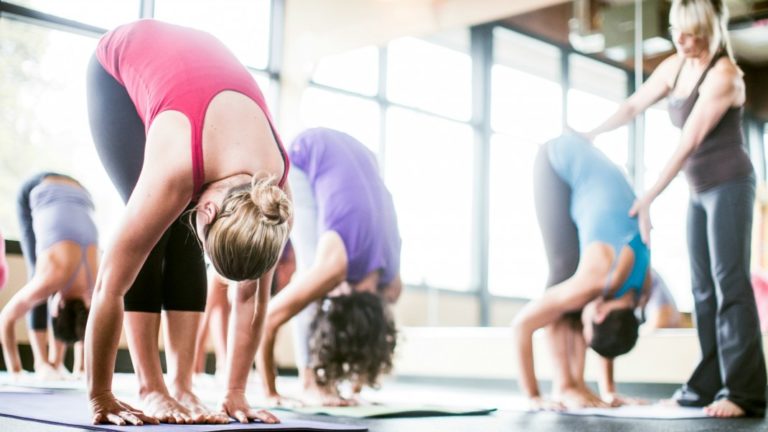
Yoga has the power to unlock, heal and balance your emotions. For those of you who have a regular practice, you can probably attest to lying down in Savasana with tears streaming down your face or smiling so hard your face hurts.
Whether the energy of the Black Water Snake or just a change in the energetic system as a whole, 2013 has already been a year of intense change and momentum for many of us. By default we have been given the space to finally make peace with the inconsistencies, loose ends, relationships that no longer serve and things that we have been putting off in our lives.
With change this compelling, emotions are inevitable and what can be difficult is maintaining balance without letting yourself get swayed or uprooted. If you experience anxiety, depression (even on a mild level), lack of confidence, worthlessness or any of the other yucky feelings that we humans get to feel, these yoga asanas will do wonders to help.
1. Standing Forward Bend (Uttanasana****) – Maintain the length in your arms, legs, torso and chest as you bend forward placing your hands in front of your feet on the mat. Bend your knees as much as you need to or place your hands on blocks.
Allow any pressure or emotion to release and as you take 10-15 breaths in this pose, really root down with your hands and feet, drawing up healing energy from the ground. Be still.
2. Tree Pose (Vrksasana)** – Shift your weight onto one leg and raise the other leg, foot facing inward and place it upon your calf, thigh or in half lotus. Raise your arms above your head in prayer or with arms separated, palms facing in.
Take 10-20 breaths and breath deeply into your heart space. Feel your roots deep within the earth like a giant oak tree. Feel stable.
3. Warrior II Pose (Virabhadrasana II) – **Stand with your feet about three-and-a half to four-and-a-half feet apart with your front toes pointed straight and your back foot in at a 45 degree angle. Bend your front knee until your leg reaches a 90-degree angle and extend your arms. Lengthen your spine by tucking your tailbone in and down.
Breathe 20-25 breaths here, drawing energy and vitality from the earth. Feel strong, powerful, confident and beautiful. Shine out of your heart space.
4. Shoulder Stand (Salamba Sarvangasana) -** Note: This pose is for advanced practitioners only. If you do not have a regular yoga practice you can lie on your back and put your legs up in the air and breathe here.
Lie on your back and elevate your legs bringing them over your head until your feet touch the floor or a block. Place your hands up your back, lift your spine and elevate your legs. With spine straight and chin away from your chest, breathe here.
Take 25-50 breaths in this pose. Inversions help to shift perception and rejuvenate the body as well as tonify and cleanse the endocrine system. You may also choose to place your feet to the floor after completing your breaths transitioning into Plough Pose (Halasana).
With regular practice of yoga asanas, you will notice yourself feeling more balanced, joyful, confident and less abound by your fears, therein, facilitating transformation and change with emotional stability.
How to Tell If You’re Being Controlled by Your Mind or Intellect

We make decisions every day. These decisions can fall under a few categories: ones we feel good about, ones we feel badly about, and ones that don’t make us feel anything.
The decisions we make can make our lives heaven or hell to live in because everything in this world is subject to the law of cause and effect, also known as the Law of Causation. We know what happens when we decide to drink too much alcohol one night. The next morning, we feel sick, tired, and most likely have a headache.
We won’t be able to function optimally and we suffer. Yet, even with this knowledge of the effect, people still decide to drink too much alcohol all too often. In order to understand why people do this to themselves, we have to break down the types of equipment we have as humans and better understand their functions. These understandings come from Vedanta: the ancient teachings of yoga as described in the Bhagavad Gita.
As humans, we are made up of matter and spirit. Spirit is the consciousness that gives rise to our matter. Spirit is your highest Truth. Without Spirit, there would be no matter. Our matter is comprised of three types of equipment; the body, the mind, and the intellect. The body is, of course, your physical manifestation with your organs, limbs, skin, bones, etc. This is what makes you tangible. Your mind is defined by Vedanta as the home of all your emotions like love, hate, anger, jealousy, joy, etc. It is also the home of your desires, likes, and dislikes.
Your mind is where your preferences live. And lastly, your intellect, your third and most important equipment is your ability to be objective and discern what is truth and what isn’t true based on knowledge and wisdom. Your intellect is the mature reasonable part of you that can question and think for itself when there’s adversity and when others are imposing their opinions and ideas on you. Your intellect stays centered regardless of the chaos happening externally.

